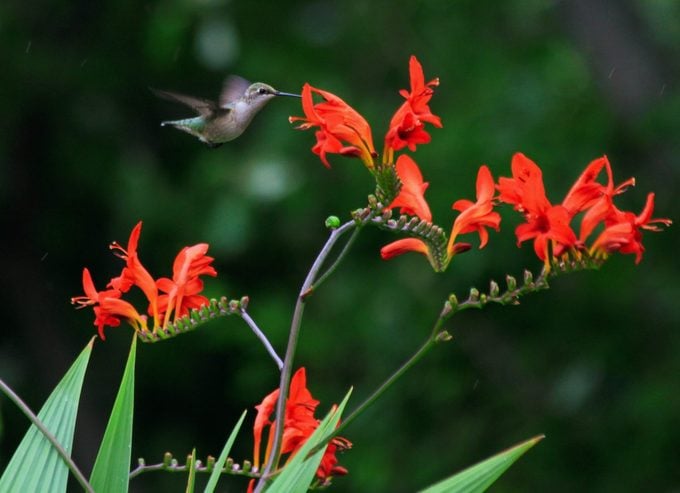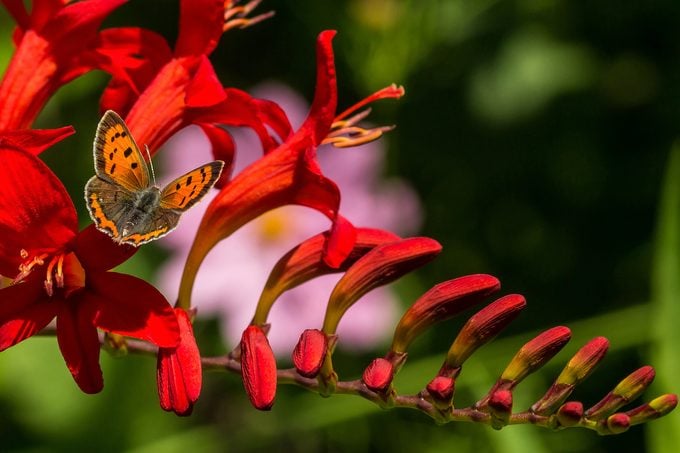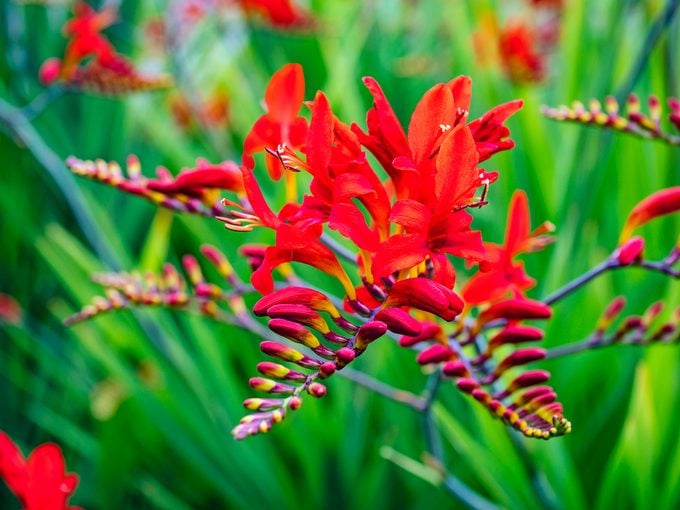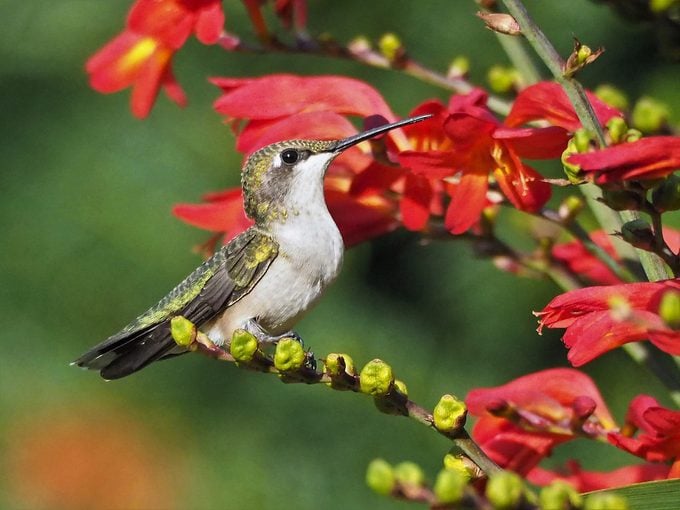Hummingbirds Can’t Resist Fiery Crocosmia Flowers
Updated: May 16, 2023
Crocosmia flowers will draw the attention of nectar-loving hummingbirds. Here's how to care for these plants in a pollinator garden.
Crocosmia Plant Benefits

Add some dramatic flair to your pollinator garden with a hummingbird favorite: crocosmia. Equally low maintenance and visually stunning, gardeners love the long, graceful sprays of blooms that can reach 3 to 4 feet tall.
Crocosmia, which is sometimes called montbretia or coppertips, is a popular plant with hummingbirds, in addition to other pollinators. Grow these triple threat plants for bees, butterflies and birds to visit.

Be sure to take in some deep breaths when near crocosmia to pick up on its mild saffron scent. And even when this plant isn’t in bloom, its swordlike foliage is striking.
Check out the top 15 colorful hummingbird flowers to grow.
Care and Growing Tips

- Common names: Crocosmia, montbretia or coppertips
- Scientific name: Crocosmia spp.
- Zones: 5 to 9
- Size: 1 to 4 feet high and up to 3 feet wide
- Light needs: Full sun
- Attracts: Birds (including hummingbirds), butterflies and bees
Discover more late summer and fall hummingbird flowers.

With orange, yellow or red flowers that appear in mid- to late-summer, crocosmia can wow as a thriller in a pot or as a showstopping border plant. Consider growing Lucifer’s deep orange-red flowers that top 4-foot-tall plants for a dazzling focal point in a pollinator garden. For the best performance, keep the soil moist.
If adding these plants to your garden, plant the corms 3 to 5 inches deep. As a best practice, divide them every two to three years to prevent overcrowding.
If you’re a gardener who lives in the northern U.S., consider digging up the corms in fall and overwintering them in a cool, dark location.
Crocosmia Not Blooming
“My crocosmia never blooms; it just produces green leaves. I’ve tried fertilizing and moving some plants to new spots. What’s going on?” asks reader Donnie Woods of Ridgecrest, California.
Horticultural expert Melinda Myers says, “Shade, excessive fertilizer and overcrowding often prevent crocosmia from flowering. Make sure your plants are receiving at least six, preferably eight or more, hours of sunlight each day. Avoid high-nitrogen fertilizers that encourage lots of leaf growth and discourage flowering. Sometimes excessive growth leads to overcrowding, which also discourages flowering. Dig and divide overcrowded plants if needed.”
Next, learn how to grow native firebush to attract hummingbirds.




















